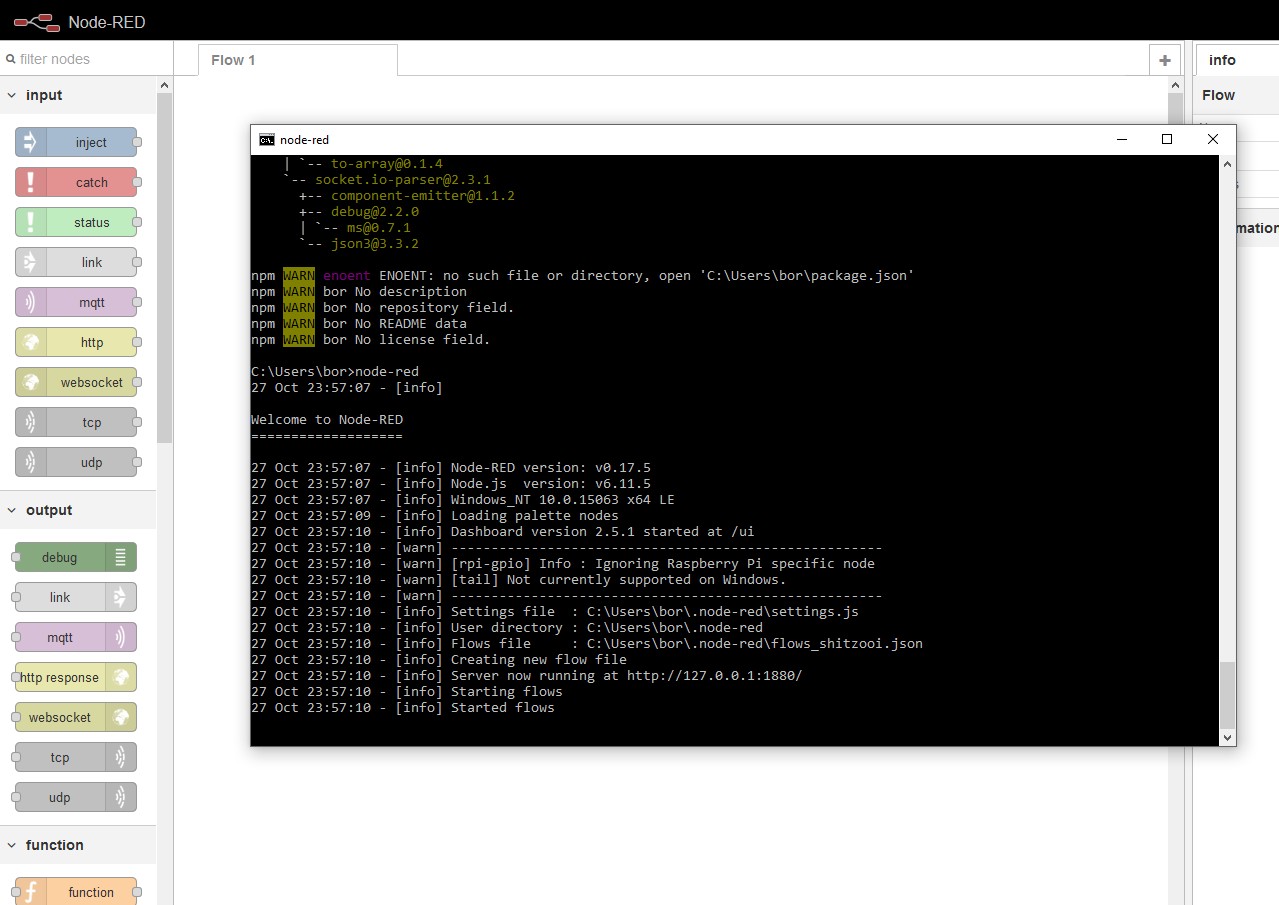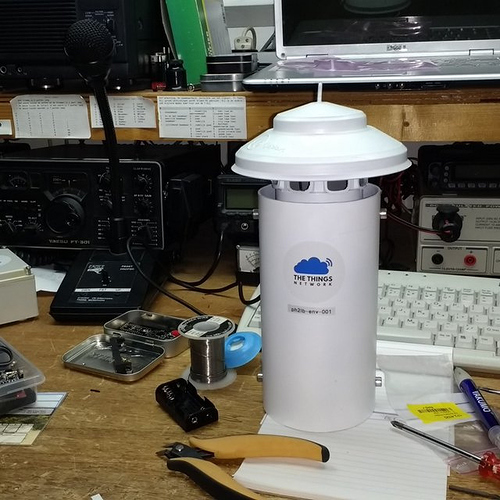RSSI does not determine whether data is included. Packet being from gateway received within deduplication timeout is what matters. Packets received after the timeout are discarded as duplicates.
thnx Jac.
and what determines this ’ deduplication timeout ’
… a lot of packets from that specific GW, is that possible, a ‘slow’ responding GW with a good rf signal ?
now I understand the following (a little bit) better :
during testing of this node firmware, I had one day my own gateway on, OTAA joining worked fine and when I switched my gateway off the packets were seen by 3 other gateways (sometimes only one)
next day, I had my gateway still off, I started the node again… no OTAA possible but join request visible in application ??
switched my gateway on, re started the node, no problem joining, switched off my gateway…
e voila… packets are seen by 3 gateways.
my conclusion sofar… always start your node close to a gateway ![]()
The back-end. After the first gateway forwards the packet to the back-end it waits for a certain amount of time to allow gateways with slow(er) connections to deliver the same packet. After that time it forwards the packet to the application.
The only thing I can think of is the gateway that received the OTAA request could not respond due to airtime restrictions or may-be it had to drop the response packet because it arrived too late at the gateway (after the transmission slot).
I will try duplicate this again and take some snapshots … this happend several times, so when the receiving gateway/connection is slow… it can drop the back-end join packet and/or the node doesn’t receive the join packets in time… creating the same status… then after several tries you then get the famous 'no_free_channel
’ to allow gateways with slow(er) connections to deliver the same packet. ’
why … isn’t the first packet received the fastest (for joining) and can the backend respond directly to that GW so a bigger chance for a successfull join ?
The first gateway may have the fastest internet connection but not the best RF path to the node.
I wonder, a metallic temp/humidity sensor enclosure 'will that hold the temperature inside longer then a plastic enclosure ?
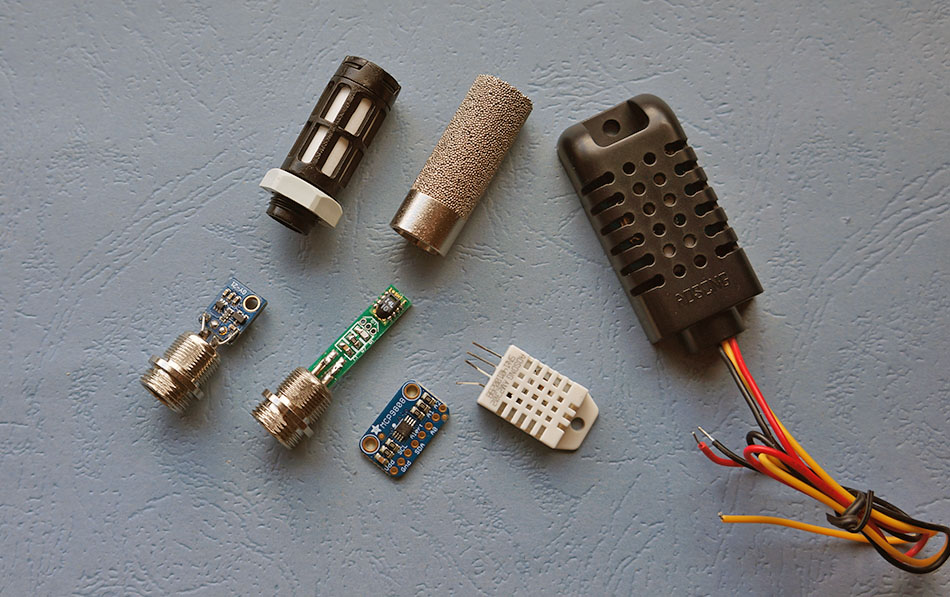
Looking at your workbench I expect an answer by tomorrow ![]()
Were did you buy this antenna?
Rocket Scream from Malaysia, asked me to test their new 1.5 v low power node in Dutch climate.
I am curious so I agreed, also to write a review about it for TTN (new idea… reviewing LoRaWAN hardware).
The modules arrived with that 5 dbi antenna… I will ask him if they are for sale separate.
They did some research on small antennas
- got an answer back
these 5 dbi antennas are all over the internet and even if they look the same… they are not.
so Rocket Scream found a quality supplier and test each antenna individually before shipping
http://www.rocketscream.com/blog/product/868-mhz-5-dbi-dipole-antenna/
finishing the coffee spy node 
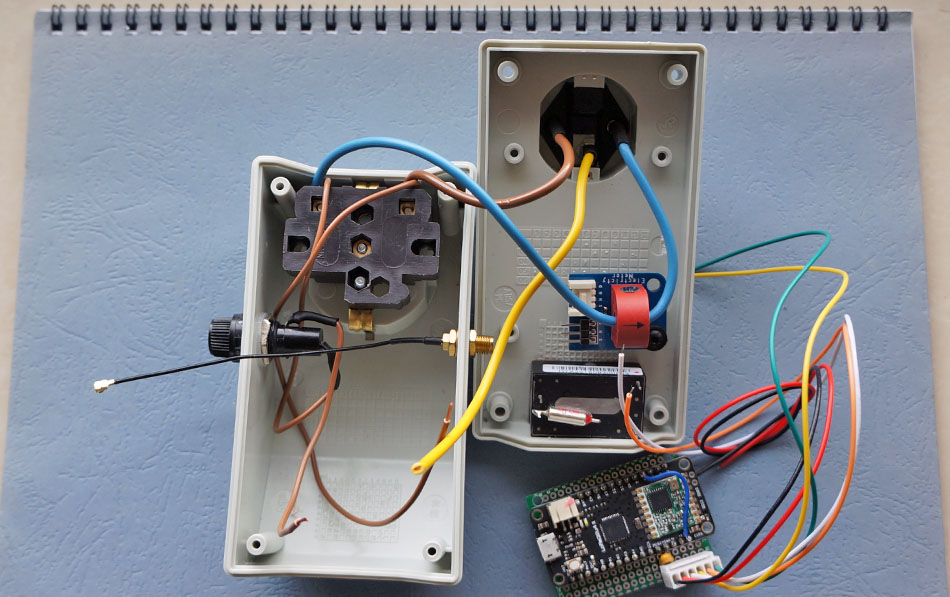
I listened to the tips from mrme earlier in this topic and bought some thermal fuses
- special timesaver tip : check the thermal fuse before glueing it to the ac-dc converter

I realise now that I break it during soldering… it was a 65°C fuse
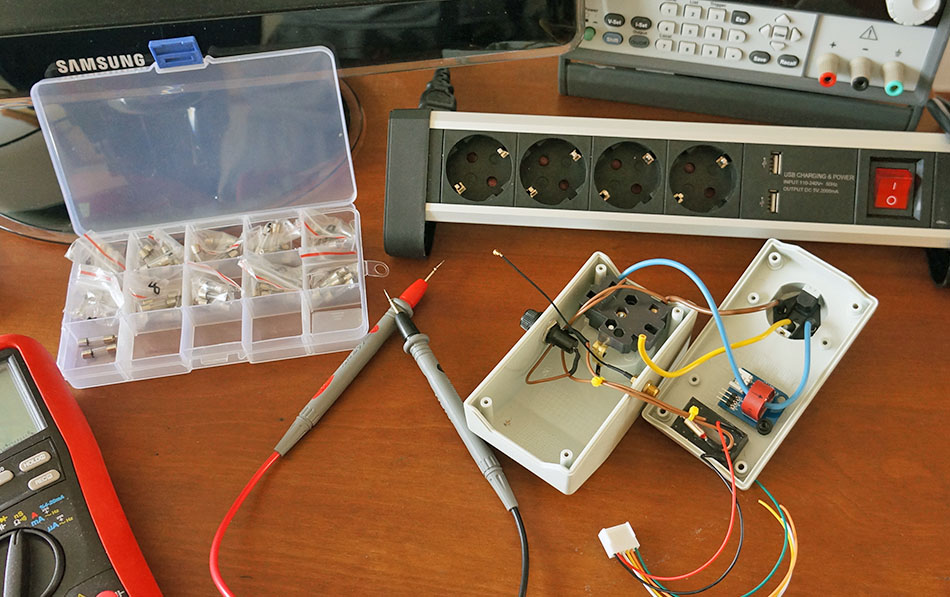
ok took the broken fuse out and just for this proof of concept I don’t put another one back… we have dc now
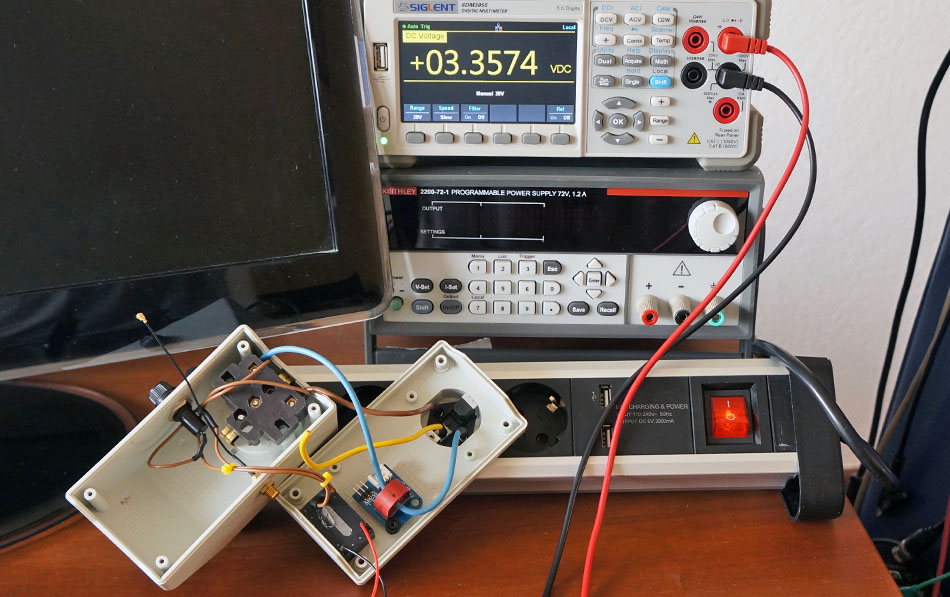
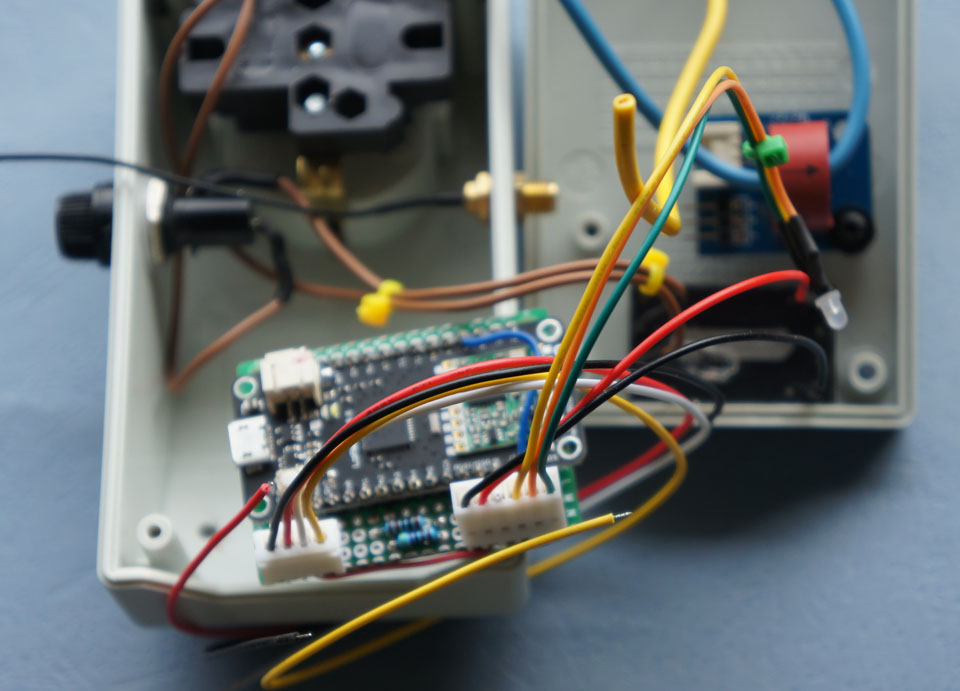
FYI:
Another method for making antenna connectors water tight is Liquid Electrical Tape (LET), which can also be removed again.
Only a few manufacturers are making this stuff, one is Starbrite. In the Netherlands this is available here: Starbrite Liquid Electrical Tape
I would expect the following factors to be of influence: (in theory at least)
- Relative large surface contact area where the mesh hull can cool or warm air air passing by, thus dampening fast temperature changes.
- The mass and surface area of the metal mesh hull.
- When the mesh hull becomes wet and weather is windy this will lower the hull’s temperature which can cool down air passing by, resulting in lower temperature readings.
- When the mesh hull becomes wet this could moisturise air passing by resulting in higher humidity readings.
- When the mesh hull is put into direct sunlight it might absorb quite some heat energy resulting in higher temperature readings.
While the mesh hull already somewhat protects the sensor, for reliable and more precise readings it is probably best to isolate it from direct sunlight and rain (snow etc.).
In your current setup the metal mesh hull is on the bottom, unprotected. When it rains it will probably gather much moist because much of the rain caught by the antenna and case will flow over it.
no, its a special enclosure, made for protecting sensors against the elements and also used in commercial outdoor sensors.
for reliable and more precise readings it is probably best to isolate it from direct sunlight and rain (snow etc.).
agree ![]()
How thick is this material?
While used in commercial outdoor sensors, putting it on the bottom where most captured rain water will flow to is probably not the best location for it.

Something like this would be nice (but in small form factor like on small weather stations).
Maybe a nice project for a 3D printing enthusiast.
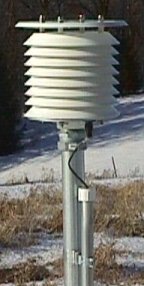
lex_ph2lb also found a nice solution
but you can 3D print it yourself
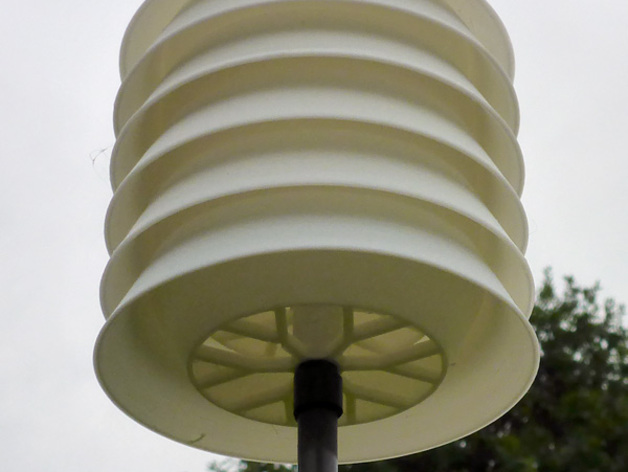
but in my experience with 3d printed display bezels … it will look very bad after a year
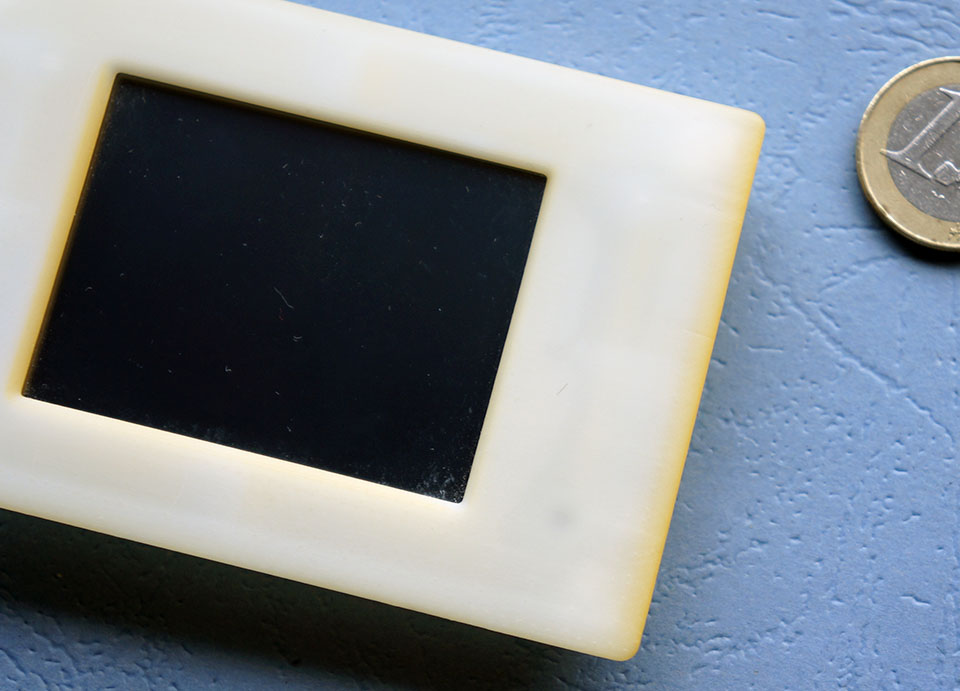
this bezel was made by ITEAD, I bought it together with a small nextion display.
and look what happend to the material … it was bright white when it arrived here.
testnode running 1 week … AA battery dropped from 1.56 to 1.52 with an update every 5 minutes
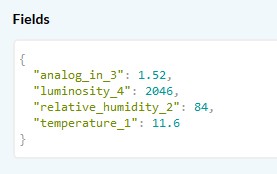

this node should work with a battery voltage down to 1 v
